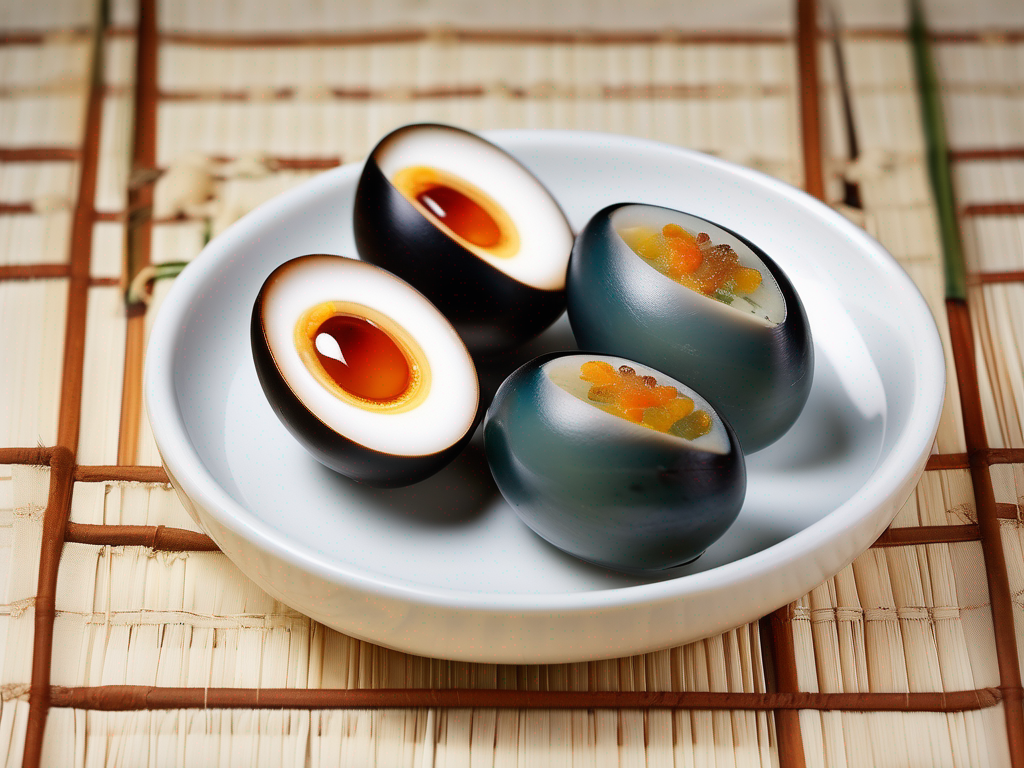
The Ultimate Guide to Preserving Century Eggs
Get Your Free Food Safety Cheat Sheet
30 most common foods with instant answers. Print it and stick it on your fridge—completely free!
The Ultimate Guide to Preserving Century Eggs
Century eggs, also known as preserved eggs or hundred-year-old eggs, are a delicacy in Chinese cuisine known for their unique flavor and texture. Preserving century eggs is a traditional method that involves aging the eggs in a mixture of clay, ash, salt, quicklime, and rice hulls for several weeks to several months. The result is a creamy, savory egg with a jelly-like texture and a distinct aroma. (Century egg)
In this comprehensive guide, we will explore the art of preserving century eggs for future use. From selecting the right eggs to storing them properly, we will cover everything you need to know to enjoy this culinary delight at home.
Selecting Fresh Eggs
Before you can begin the preservation process, it's essential to start with fresh, high-quality eggs. Here are some tips for selecting the best eggs for preserving:
Tips for selecting fresh eggs:
- Choose eggs that are free of cracks or damage.
- Opt for eggs that are relatively small to medium in size.
- Look for eggs with a uniform shape and color.
The Preservation Process
Preserving century eggs is a time-honored tradition that requires careful attention to detail. Here is a step-by-step guide to preserving century eggs at home:
Step 1: Prepare the Preservation Mixture
- Mix together equal parts clay, ash, salt, quicklime, and rice hulls in a large, non-reactive container.
- Ensure that the mixture is well combined before moving on to the next step.
Step 2: Coat the Eggs
- Gently coat each egg in the preservation mixture, making sure to cover them completely.
- Place the coated eggs in a clean, dry container, making sure they are not touching each other.
Step 3: Store the Eggs
- Seal the container with a tight-fitting lid to prevent air from entering.
- Store the container in a cool, dark place for the aging process to take place.
Step 4: Check for Readiness
- After several weeks to months, check the eggs for readiness by gently tapping them with your finger.
- If the eggs feel firm and have a slightly translucent appearance, they are ready to be eaten.
Storing Preserved Century Eggs
Once your century eggs are ready, it's essential to store them properly to maintain their freshness and flavor. Here are some tips for storing preserved century eggs:
Tips for storing preserved century eggs:
- Keep the eggs in their original container or transfer them to an airtight container.
- Store the eggs in the refrigerator to prolong their shelf life.
- Use the eggs within a few weeks for the best flavor and texture.
Safety Precautions
While preserving century eggs is a relatively straightforward process, it's essential to follow some safety precautions to prevent foodborne illnesses. Here are some safety tips to keep in mind:
Safety tips for preserving century eggs:
- Wash your hands thoroughly before handling the preservation mixture and eggs.
- Use clean, sanitized containers and utensils throughout the preservation process.
- Avoid consuming century eggs that show signs of spoilage, such as mold or off odors.
Conclusion
Preserving century eggs is a rewarding culinary endeavor that allows you to enjoy this unique delicacy at home. By following the steps outlined in this guide and taking the necessary safety precautions, you can savor the rich flavors and textures of preserved century eggs with confidence. So why not try your hand at preserving century eggs and elevate your culinary repertoire with this ancient delicacy?
Remember, the key to successful preservation lies in sourcing fresh, high-quality eggs, following the preservation process diligently, and storing the eggs properly. With a little patience and attention to detail, you can enjoy the rich, savory taste of century eggs whenever the craving strikes. Enjoy! (Century egg)
Authoritative Food Safety References
These agencies and university labs inform every tip and health precaution we publish.
USDA FoodKeeper – Cold Storage Guidelines
Official refrigerator, freezer, and pantry timelines maintained by the U.S. Department of Agriculture.
Visit USDA FoodKeeperFDA Produce Safety Rule & Grower Guidance
Field-to-fridge handling practices that prevent contamination of fruits, vegetables, and leafy greens.
Visit FDA Produce SafetyCDC Foodborne Illness Prevention Hub
Surveillance-backed guidance on pathogens, symptoms, and steps to reduce foodborne illness risk.
Visit CDC Food SafetyUC Davis Postharvest Technology Center
University research detailing optimal storage atmospheres for produce after harvest.
Visit UC Davis PostharvestPenn State Extension – Home Food Preservation & Safety
Peer-reviewed extension bulletins on safe canning, chilling, and reheating practices.
Visit Penn State ExtensionGet Your Free Food Safety Cheat Sheet
30 most common foods with instant answers. Print it and stick it on your fridge—completely free! Want more? Upgrade to the complete guide with 70+ foods.
Scan your food directly and get instant safety info using our AI-powered camera feature.